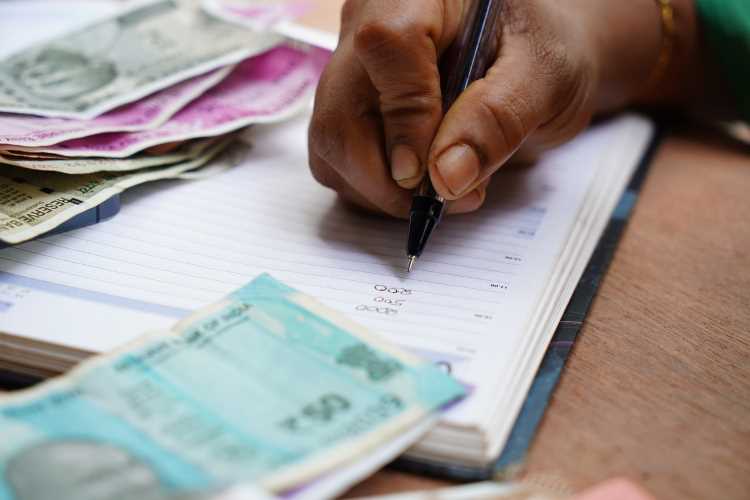The International Monetary Fund has raised concerns about India’s public debt, warning that the combined debt of its Union and state governments could surpass 100% of its GDP in the medium term. The IMF noted the heightened long-term sustainability risks, exacerbated by the substantial investments needed for India’s climate change mitigation efforts. This warning comes just two months after the IMF acknowledged India’s high debt, comparable with China’s, but considered it less risky than its northern neighbour’s.
The IMF’s concerns about India’s public debt highlight a growing dilemma. While India needs significant investments in climate mitigation and infrastructure, its debt, projected to surpass 100% of GDP, could constrain its ability to respond to crises or implement counter-cyclical policies. This necessitates a delicate balancing act. India’s ambitious growth targets and climate goals needs to be pursued alongside prudent fiscal consolidation, including efficient spending and improved revenue collection. Ignoring the warning signs could jeopardise the long-term fiscal sustainability and limit India’s resilience to future shocks.
READ | COP28 shows glimmer of hope, but green tech innovation needs a boost
In its annual Article IV consultation report, the IMF emphasised the necessity for India to invest significantly in climate change mitigation while also preparing for climate-related stresses and natural disasters. The IMF recommended exploring new, preferably concessional, financing sources, increasing private sector investment, and implementing carbon pricing or equivalent measures. The IMF issues these reports as part of its surveillance role under the Articles of Agreement with member countries.
The IMF views India’s economic growth outlook as balanced, upgrading its medium-term potential growth rate to 6.3% from 6%, due to unexpected capital spending and increased employment. The Indian government is even more optimistic, aiming for a potential growth rate of 7-8%.
Soaring public debt
The current debt trajectory also raises questions about the sustainability of state finances. Several states struggle with high debt and interest burdens, which constrain their ability to invest in crucial sectors like healthcare and education. To break this cycle, India needs to re-evaluate the role of states in borrowing and prioritise investment in areas that generate long-term returns. Implementing stricter Fiscal Responsibility and Budget Management rules would be a crucial step. Additionally, exploring new financing avenues, like carbon pricing or concessional loans for climate projects, can help leverage India’s growth potential without exacerbating debt.
India’s fiscal deficit and public debt have long been concerns. Pre-pandemic, its debt levels were among the highest in the developing world. With the 2024 general election approaching, the electoral budget cycle may further increase the debt ratio.
Previously, the IMF advised India to implement an ambitious medium-term fiscal consolidation plan. Comparing current levels to the pre-pandemic level of 75% in 2019, the IMF highlighted state-level risks, particularly in Punjab, Kerala, Rajasthan, and West Bengal, where high debt and financing needs result in significant interest burdens.
High debt levels limit India’s ability to implement counter-cyclical fiscal policies and respond to shocks. Despite IMF warnings, the Indian government remains undisturbed, arguing that sovereign debt risks are minimal since it ispredominantly in domestic currency. KV Subramanian, India’s executive director at the IMF, labeled the IMF’s concerns as excessive, noting that India’s public debt-to-GDP ratio has remained stable over the past two decades.
While the IMF urges fiscal prudence, India’s government should not ignore its unique challenges. The impact of imported inflation on a large population demands targeted interventions. Similarly, India’s foreign exchange interventions, though exceeding IMF’s expectations, might be necessary to safeguard its economic stability. Communication and transparency between India and the IMF are crucial to finding an optimal balance between addressing global economic risks and protecting India’s domestic needs.
The IMF also commented on India’s foreign exchange interventions, suggesting they may exceed necessary levels. However, a government official argued that the IMF fails to understand India’s domestic challenges, particularly the impact of imported inflation on its large population.
To address these issues, the IMF advises India to reduce primary deficits through various measures, including improving revenue collection and spending efficiency. The IMF also recommends strengthening India’s tax system, broadening the base for personal and corporate income taxes, and eliminating tax loopholes.
The government must reevaluate the state’s role, accelerate disinvestment processes, and enforce Fiscal Responsibility and Budget Management rules to control state borrowing. The IMF commends India’s increased public investments, emphasising their importance for growth, education, and healthcare. Looking ahead, India faces risks from a global economic slowdown, supply disruptions, and weather shocks, which could reignite inflation and lead to food export restrictions.

